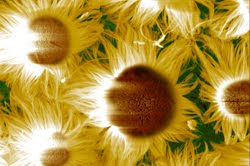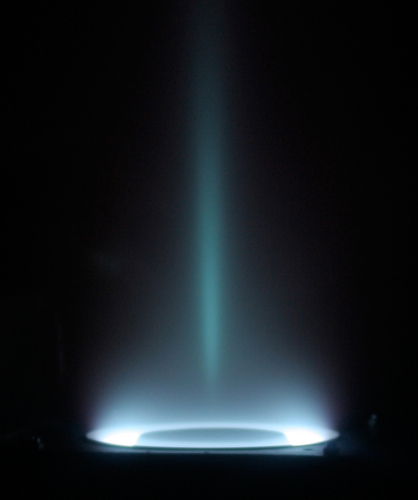Built around a turnbuckle system where each sphere, designated as either a right hand or left hand sphere, is joined by a bronze bushing that drives a brass turnbuckle bolt.
Check out the complete set of Chris Bathgate blogposts.

highlighting the beauty from the intersection of science ♥ art

 Jaws of Darkness | Ultra Fine Wire Weave | Fiorella Lavado | Photography Noel Mclaughlin
Jaws of Darkness | Ultra Fine Wire Weave | Fiorella Lavado | Photography Noel Mclaughlin
 Monosynaptic tracing rabies virus with EGFP gene | The Beautiful Brain
Monosynaptic tracing rabies virus with EGFP gene | The Beautiful Brain


 SL324454291 | Copyright Chris Bathgate
SL324454291 | Copyright Chris Bathgate Augmented Reality | James Fosdike
Augmented Reality | James Fosdike
 A Series of 5 Sr622224431773524's lined up next to each other | Copyright Chris Bathgate
A Series of 5 Sr622224431773524's lined up next to each other | Copyright Chris Bathgate Explanation iDome options by Paul Bourke
Explanation iDome options by Paul Bourke
 That Covers It | The Tree of Life--carbon, glucose, light, DNA, and the golden rectangle. A tattoo by Kevin Riley. On the chest of a PhD student in molecular biology | Copyright Carl Zimmer
That Covers It | The Tree of Life--carbon, glucose, light, DNA, and the golden rectangle. A tattoo by Kevin Riley. On the chest of a PhD student in molecular biology | Copyright Carl Zimmer Somnolence Structures | Copyright Lisa Carrie Goldberg
Somnolence Structures | Copyright Lisa Carrie Goldberg Scorpion HP, opus 541 | One uncut square of Korean hanji paper | Copyright Robert Lang
Scorpion HP, opus 541 | One uncut square of Korean hanji paper | Copyright Robert Lang Piña Colada Copyright Michael W. Davidson and Florida State University Research Foundation, Inc
Piña Colada Copyright Michael W. Davidson and Florida State University Research Foundation, Inc
 Wall Piece | River | Copyright Theo Kamecke
Wall Piece | River | Copyright Theo Kamecke Amy Chase Gulden | E. Coli on Agar | Copyright Amy Chase Gulden
Amy Chase Gulden | E. Coli on Agar | Copyright Amy Chase Gulden

 Cara Phillips | Ultraviolite Beauties | Copywrite Cara Phillips
Cara Phillips | Ultraviolite Beauties | Copywrite Cara Phillips Smithsonian Community | Two Coral Polyps | All rights reserved by aporanee
Smithsonian Community | Two Coral Polyps | All rights reserved by aporanee Image courtesy of Advanced Materials
Image courtesy of Advanced Materials David Garret | Towers of Vertically Aligned Nano Tubes
David Garret | Towers of Vertically Aligned Nano Tubes Steven Meisel Oil & Water Vogue August 2010
Steven Meisel Oil & Water Vogue August 2010 Niki Sperou | Chimera | Wall Mounted Photos
Niki Sperou | Chimera | Wall Mounted Photos

 Angela Valamanesh
Angela Valamanesh Both images are composed of what is known as nanowires. Each nanowire is about 10 nm in diameter and tens of micrometers in length. They were grown from a silicon oxide (SiOx) compound for the sunflowers and a zink oxide (ZnO) for the nano-witch. Both use a process known as Vapour-Liquid-Solid (VLS) to grow the nanowires.
Both images are composed of what is known as nanowires. Each nanowire is about 10 nm in diameter and tens of micrometers in length. They were grown from a silicon oxide (SiOx) compound for the sunflowers and a zink oxide (ZnO) for the nano-witch. Both use a process known as Vapour-Liquid-Solid (VLS) to grow the nanowires. This Xenon Plasma Accelerator uses electronic and magnetic fields to accelerate xenon propellant to produce thrust. Xenon is a colourless gas but we can see a blue haze here due to the result of the xenon being excited by electric discharge - like the blue zap of static electric shock we're all too familiar with, although this is a form of electrostatic discharge, but you get the idea. Plasma Accelerators are a leading technology for future space flight... and it looks darn pretty too.
This Xenon Plasma Accelerator uses electronic and magnetic fields to accelerate xenon propellant to produce thrust. Xenon is a colourless gas but we can see a blue haze here due to the result of the xenon being excited by electric discharge - like the blue zap of static electric shock we're all too familiar with, although this is a form of electrostatic discharge, but you get the idea. Plasma Accelerators are a leading technology for future space flight... and it looks darn pretty too. (Image: Chris Sip and Albert Folch/University of Washington)
(Image: Chris Sip and Albert Folch/University of Washington)